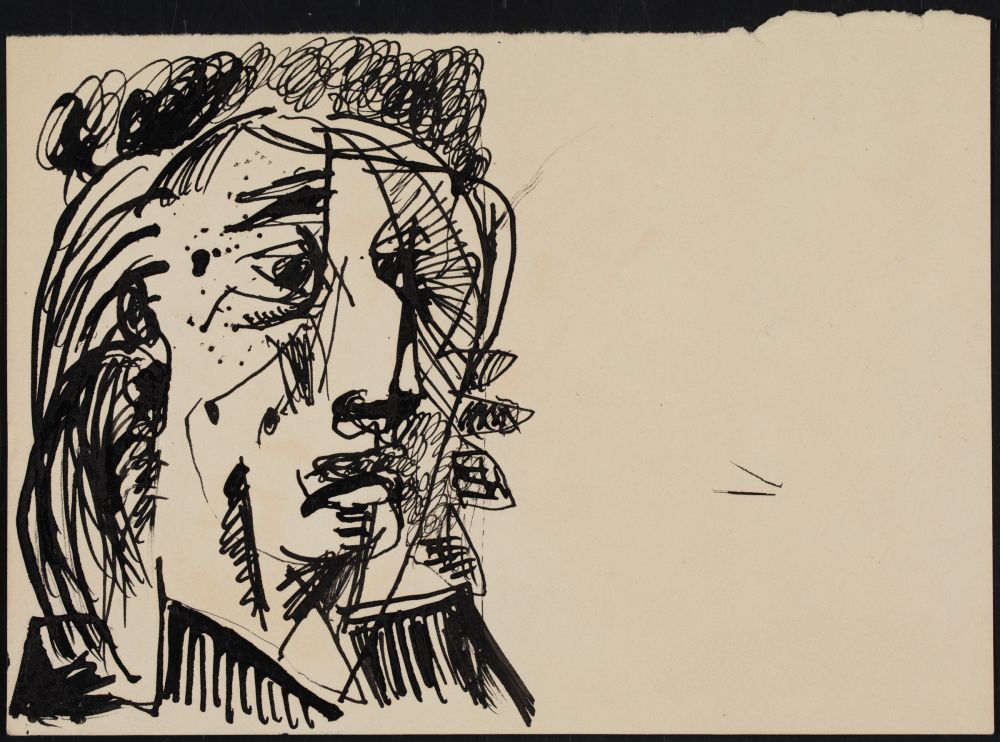- News
- Events
- Oneg Shabbat
- Collections
- Research
- Exhibitions
- Education
- Publishing Department
- Genealogy
- About the Institute
- Bookstore


In connection with the preparations for the opening of the exhibition about Izaak Celnikier at the Jewish Historical Institute, we kindly ask for information from people who know the author of the following photographs, which we want to present at the exhibition or publish in the catalogue of the exhibition.
We also ask for information about the copyright owners of these photographs.
We will be also very grateful for information from people who have archival photographs of the artist from 1952-1957. If you have any information on this subject, please send a message to the following address: zbenesz@jhi.pl
Thank you!
Minor Remnants from Solna Street. Isaac Celnikier and the Holocaust Experience.
The opening of the exhibition is scheduled on November 9, 2023.
An exhibition devoted to the post-war, emerging at the intersection of Socialist Realism and Arsenal aesthetics, youthful works of Isaac Celnikier from 1946-1964, a great Jewish artist born in Warsaw, an alumni of Janusz Korczak's Orphanage and a Holocaust survivor. This will be the first exhibition of his early works, in particular his numerous drawings (including illustrations to short stories by Abraham Rejzen and poems by Dovid Sfard), which are deposited in various institutions, have never been collected into one and shown to the public.
Shortly before leaving for France in 1957, Isaac Celnikier began working with the “Idisz Buch” publishing house. He created illustrations for Yiddish publications: Oysgeveylte verk (Selected Works) by Abraham Reisen, and Lider (Poems) by Dovid Sfard - publications so far untranslated into Polish. The illustrations, which Celnikier never saw in their final publication because they were published after he left Poland, contain coded content relating the viewer to the artist's biography. The drawings thus create a parallel narrative to the text they illustrate. In his work, Celnikier projected his personal experience of the Holocaust onto Rejzen's stories from earlier times, while he interpreted some stories as prefigurations of the Holocaust and gave expression to this in the illustrations he created.
The exhibition will attempt to read Celnikier's biography in illustrations to Yiddish stories and poems. We will trace how these drawings, created before his departure from Poland, can be read as sketches for large-format paintings already created in France, and referring to a single original - images from the ghetto fixed in the artist's memory.
Zuzanna Benesz-Goldfinger will be the curator of the exhibition.
![20130520145919_00001.jpg [7.47 MB]](/storage/image/core_files/2023/1/27/b74fdf47dd814a1e47268786f8f4d781/jpg/jhi/preview/20130520145919_00001.jpg)
The man accompanying Izaak Celnikier is André Schwarz-Bart.
![20130520150147_00009 - kopia.jpg [4.81 MB]](/storage/image/core_files/2023/1/27/06202e2494e49099c6ce4d15ee103e9b/jpg/jhi/preview/20130520150147_00009%20-%20kopia.jpg)
![20130520150147_00016-a.png [10.63 MB]](/storage/image/core_files/2023/1/27/08eb942acdd1159b7f0df6075fecd0da/png/jhi/preview/20130520150147_00016-a.png)
![20130520150147_00019-a.png [7.35 MB]](/storage/image/core_files/2023/1/27/eb7e2a8f3f9e40b7dcdc8ce52b75c94b/png/jhi/preview/20130520150147_00019-a.png)
![20130520151650_00001 - kopia.jpg [5.80 MB]](/storage/image/core_files/2023/1/27/a7be73aa58a7cbdde2e376e58b2257c1/jpg/jhi/preview/20130520151650_00001%20-%20kopia.jpg)
![Garwolińska 6.jpg [391.78 KB]](/storage/image/core_files/2023/1/27/2e2704f235e75a025a433985bbe0d60e/jpg/jhi/preview/Garwolińska%206.jpg)
Barrack in Warsaw's Praga District, after 1945, at 6 Garwolińska Street, where Izaak Celinikier lived, author unknown, collection of the JHI Heritage Documentation Department
![Jagiellońska 28 - fasada.jpg [555.90 KB]](/storage/image/core_files/2023/1/27/91a33e7f0d45fd8a8831418b8850f1c9/jpg/jhi/preview/Jagiellońska%2028%20-%20fasada.jpg)
Former Michał Bergson Jewish Educational Establishment at 28 Jagiellońska Street, 1967, author unknown, collection of the JHI Heritage Documentation Department